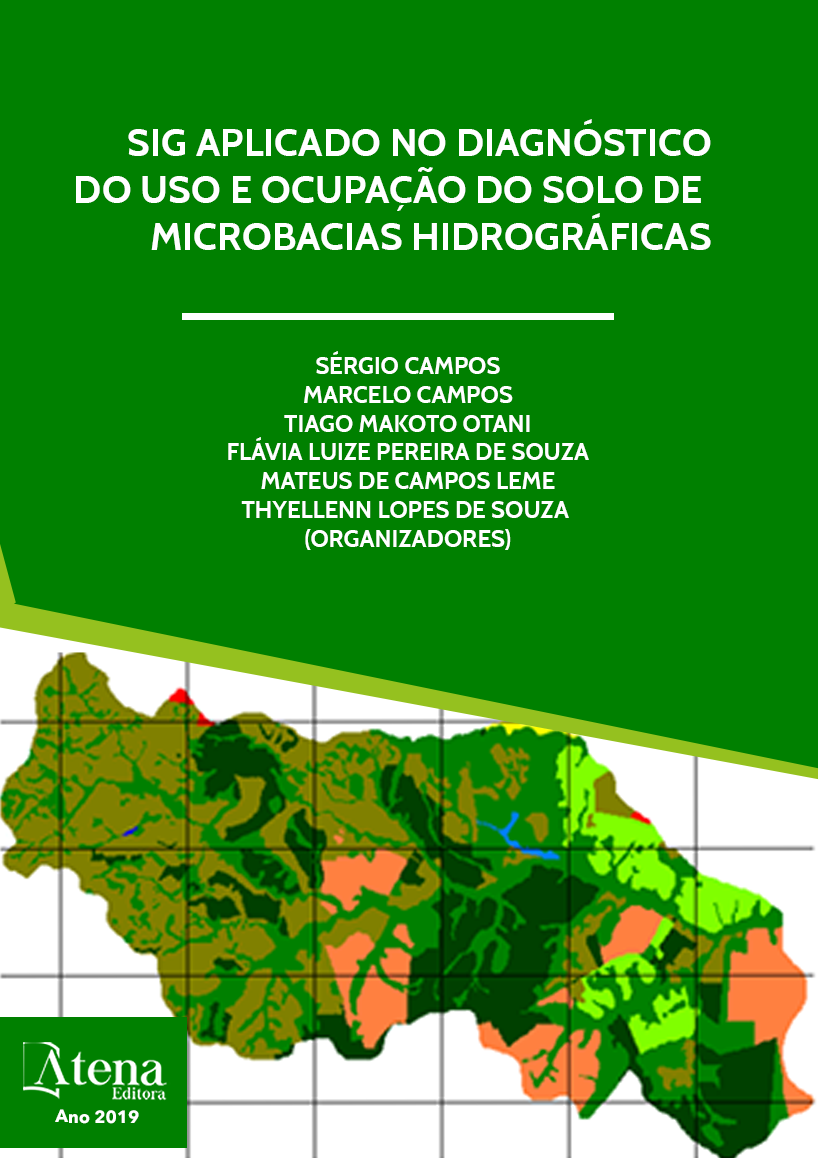
SENSORIAMENTO REMOTO APLICADO NA EVOLUÇÃO PAISAGÍSTICA DE UMA MICROBACIA
O presente trabalho objetivou
analisar a evolução paisagística da microbacia
do Ribeirão Duas Águas - Botucatu (SP) através
do uso do Sistema de Informações Geográficas
– IDRISI 32 e de imagem de satélite digital,
bandas 3, 4 e 5 do Sensor TM, do LANDSAT 5,
da órbita 220, ponto 76, quadrante A, passagem
de 8/06/97 e fotografias aéreas verticais de
1962, em escala 1:25000, no período de
35 anos. A área de estudo situa-se entre as
coordenadas geográficas 22o 43' 49" a 22o 49'
29" de longitude S e de 48o17' 53" a 48o 22' 03"
de longitude W Gr., apresentando uma área
de 4007,19ha. A cobertura vegetal em 1962
apresentou os seguintes resultados: pastagens
– 21,72%; capoeira – 70,29%, mata – 1,14% e
solo exposto – 6,85% e em 1997: reflorestamento
- 19,36%; mata – 4,25%; pastagens – 26,80%;
uso agrícola – 26,84%, solo exposto – 1,21%
e capoeira – 21,54%. Os resultados permitiram
constatar que houve um incremento significativo
nas áreas de uso agrícola e reflorestamento em
função da redução das áreas de capoeiras. As
imagens do Sensor TM do Landsat 5, permitiram
o mapeamento do uso da terra da microbacia
de maneira rápida e confiável, além de fornecer
um excelente banco de dados para futuros
planejamentos. O SIG - Idrisi através de seus
diferentes módulos para georreferenciamento,
classificação digital do uso da terra e modelo
matemático permitiu a discriminação dos usos
da terra: reflorestamento, mata, pastagem,
uso agrícola, solo exposto e capoeira. O alto
índice de ocupação do solo por uso agrícola,
pastagem e reflorestamento na bacia (73%)
refletem a predominância da agropecuária e da
silvicultura regional.
SENSORIAMENTO REMOTO APLICADO NA EVOLUÇÃO PAISAGÍSTICA DE UMA MICROBACIA
-
DOI: 10.22533/at.ed.96319191115
-
Palavras-chave: Evolução paisagística, microbacia, sensoriamento remoto.
-
Keywords: Landscape evolution, microbasin, remote sensing.
-
Abstract:
The present work aimed to
analyze the landscape evolution of the Ribeirão
Duas Águas watershed - Botucatu (SP) through
the use of the Geographic Information System -
IDRISI 32 and digital satellite image, bands TM
3, 4 and 5, LANDSAT 5. , from orbit 220, point
76, quadrant A, passage 8/06/97 and vertical
aerial photographs from 1962, at a scale of
1:25000 over a period of 35 years. The study
area lies between the geographical coordinates
22o 43' 49" to 22o 49' 29" longitude S and 48o 17'
53" to 48o 22' 03" longitude W Gr., Presenting
an area of 4007.19ha . The vegetation cover in
1962 presented the following results: pastures
Capítulo 15 84
- 21.72%; capoeira - 70.29%, forest - 1.14% and exposed soil - 6.85% and in 1997:
reforestation - 19.36%; kills - 4.25%; pastures - 26.80%; agricultural use - 26.84%,
exposed soil - 1.21% and capoeira - 21.54%. The results showed that there was a
significant increase in areas of agricultural use and reforestation due to the reduction
of areas of capoeiras. Landsat 5 Sensor TM imagery has enabled the rapid and reliable
mapping of land use in the watershed and provides an excellent database for future
planning. The GIS - Idrisi through its different modules for georeferencing, digital land
use classification and mathematical model allowed the discrimination of land uses:
reforestation, forest, pasture, agricultural use, exposed soil and poultry. The high rate
of land use by agricultural use, pasture and reforestation in the basin (73%) reflects the
predominance of agriculture and regional forestry.
-
Número de páginas: 15
- Ana Paula Barbosa
- Sérgio Campos
- Felipe Genovês Eingenheer
- Lincoln Gehring Cardoso
- Zacarias Xavier de Barros
- Elen Fitipaldi Brasílio Carrega
- Bruno


